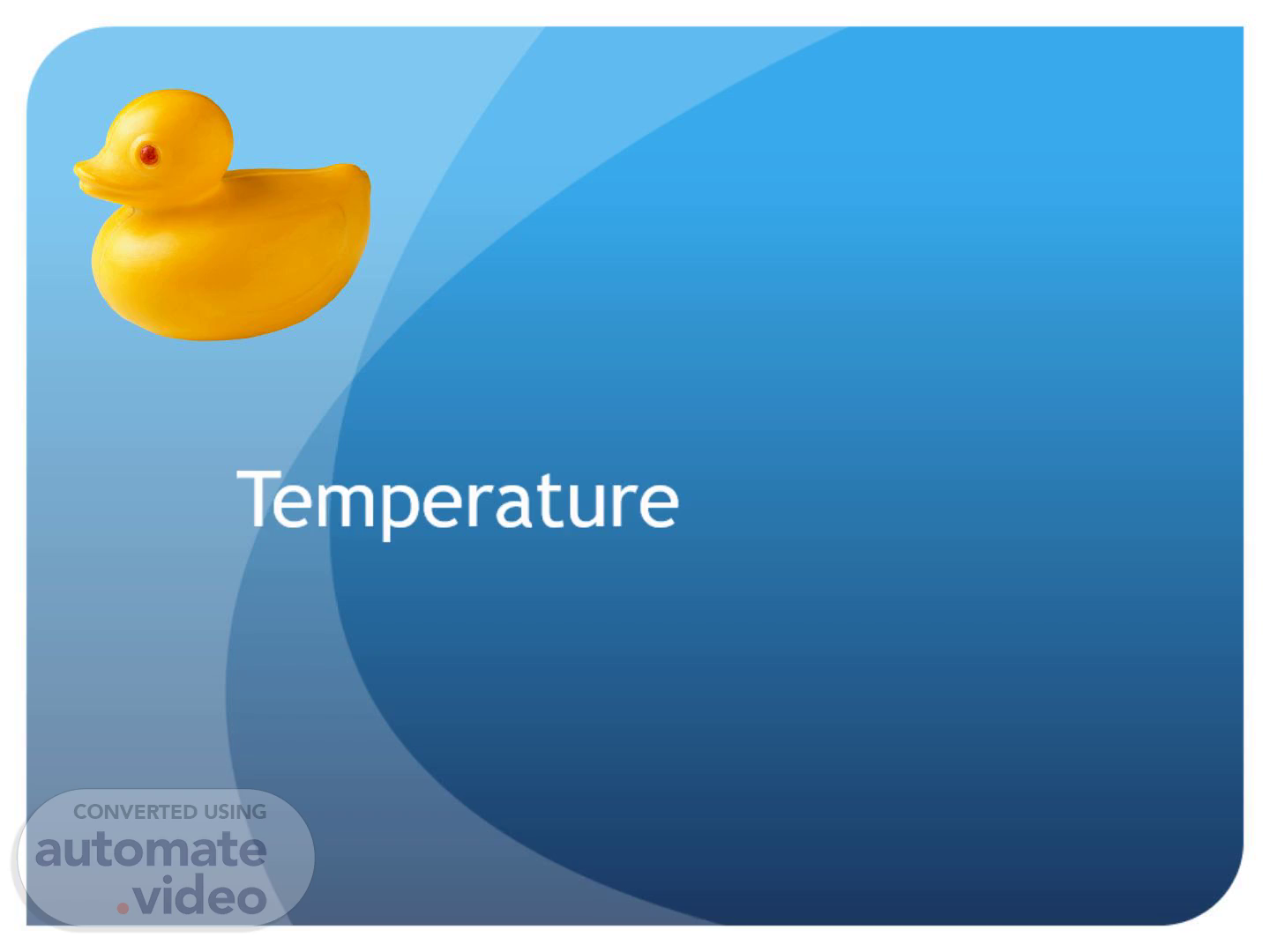Scene 1 (0s)
[Audio] Temperature. Temperature.
Scene 2 (6s)
[Audio] What is happening? Let say that we have a lovely cup of milo placed in a room-temperature room..
Scene 3 (16s)
[Audio] What is happening? After a while, the hot milo is no longer hot and have the same degree of hotness as the room. So what is happening here? When we placed the hot milo in the room, we know that after a while, the hot milo will be in some kind of thermal equilibrium with the room. Heat leaves and enters the milo at the same rate. In other words, there is no net flow of heat between the milo and the environment. We refer this equilibrium as thermal equilibrium.
Scene 4 (48s)
[Audio] Temperature Previously we looked at a two bodies system that involves a cup of hot milo and a room. Let say we have a three bodies system. If two of the bodies are in thermal equilibrium with the third body, they must be in thermal equilibrium with each other. This is the zeroth law of thermodynamic..
Scene 5 (1m 6s)
[Audio] Temperature is describe as the degree of hotness, used to describe a physical property to determine whether or not two objects are in thermal equilibrium. How can we measure temperature? What can we use to measure temperature?.
Scene 6 (1m 21s)
[Audio] Making a Thermometer How do we make thermometer in the first place? How do we know that 300C is indeed 300C? The idea of thermometer originate from the concept that there are some materials responds to temperature. In other words, the properties. Recall back to the topic on ideal gases. Charles’s law states that the volume of a gas is proportional to the temperature. Thus the volume expands when the temperature increases and vice versa.
Scene 7 (1m 49s)
[Audio] So what material and properties can we use to make thermometer and how can we determine the temperature?.
Scene 8 (1m 59s)
[Audio] Number 1 – The materials and properties that are suitable to make a thermometer. Metals – expansions of material with temperature. Metals – the resistance of the material will vary with temperature. Gas – the kinetic energy increases with increase in temperature. Thus the volume increases. This is illustrated with Charles’s Law, V α T These materials are known as thermometric substances.
Scene 9 (2m 30s)
[Audio] Number 2 – How to make use of the properties to make a thermometer? We know that the properties discussed earlier vary with temperature but we still need to know how to use the properties to make a thermometer. How can we know the temperature of a body?.
Scene 10 (2m 47s)
[Audio] Number 2 – How to make use of the properties to make a thermometer? We cannot tell what temperature a body has at any one time because we have no reference line. However we do know two points when it comes to water. We know that it freezes at one point and boils at one point. We can make use of the two points and make it as reference points.
Scene 11 (3m 8s)
[Audio] Number 2 – How to make use of the properties to make a thermometer? We now have taken two reference points. In Celsius scale, the point at which water freezes is 00C and the point at which water boils is 1000C. Any other points between or beyond the two points may be calculated by cross multiply.
Scene 12 (3m 30s)
[Audio] Lets have a look at a liquid metal – mercury. It expands with increase in temperature and vice versa. We then put it to a scale. If we put in a metre scale, we have,.
Scene 13 (3m 43s)
[Audio] (steam point) XS 1000C Xt t0C (ice point) 00C Xi.
Scene 14 (3m 52s)
[Audio] Assuming X varies uniformly or linearly, with temperature measured, therefore.
Scene 15 (4m 0s)
[Audio] Thermometer. Thermometer. capillary tube graduation mercury in bore of tube bulb sliding maximum marker.
Scene 16 (4m 7s)
[Audio] Thermometer. Thermometer.
Scene 17 (4m 14s)
Thermometer. ua;aLLIOLU-1eq-; se6 euri10A 41-EJSUOO.
Scene 18 (4m 21s)
Thermometer. Current sensor ice Heat source Temperature sensor Water.
Scene 19 (4m 27s)
[Audio] Steam point 1000C Ice point 00C Room temperature Resistance of resistance thermometer 75.000 ohms 63.000 ohms 64.992 ohms Pressure recorded by constant volume gas thermometer 1.10 x 107 Nm-2 8.00 x 106 Nm-2 8.51 x 106 Nm-2 Using the data given above, calculate the room temperature on both the thermometers..
Scene 20 (5m 4s)
[Audio] The Absolute Thermodynamic Scale We first deal with the Celsius scale. How about the Kelvin scale that is the SI unit in physics? This scale is based on the ideal gas equation, PV proportional to T, which shows a linear relation for the thermometric parameters of P, V and T Similar procedure as before, we need two points as references..
Scene 21 (5m 26s)
[Audio] So what suitable points can we use? The points that can be use are 1. Lower fixed point – absolute zero, obtained from PV α T 2. Upper fixed point – triple point temperature of water..
Scene 22 (5m 42s)
[Audio] Triple point of Water The triple point of water, Ttr , is the temperature at which saturated water vapour, pure water and ice all coexist in equilibrium. It is better reference point as it is unique and invariant. A value of 273.16 K is assigned to the triple point of water. (The kelvin is the SI unit for the fundamental temperature. It is defined as the fraction 1/273.16 of the thermodynamic temperature of the triple point of water.
Scene 23 (6m 16s)
[Audio] The Absolute Thermodynamic Scale At the triple point of water, Ttr At a general temperature. T Therefore,.
